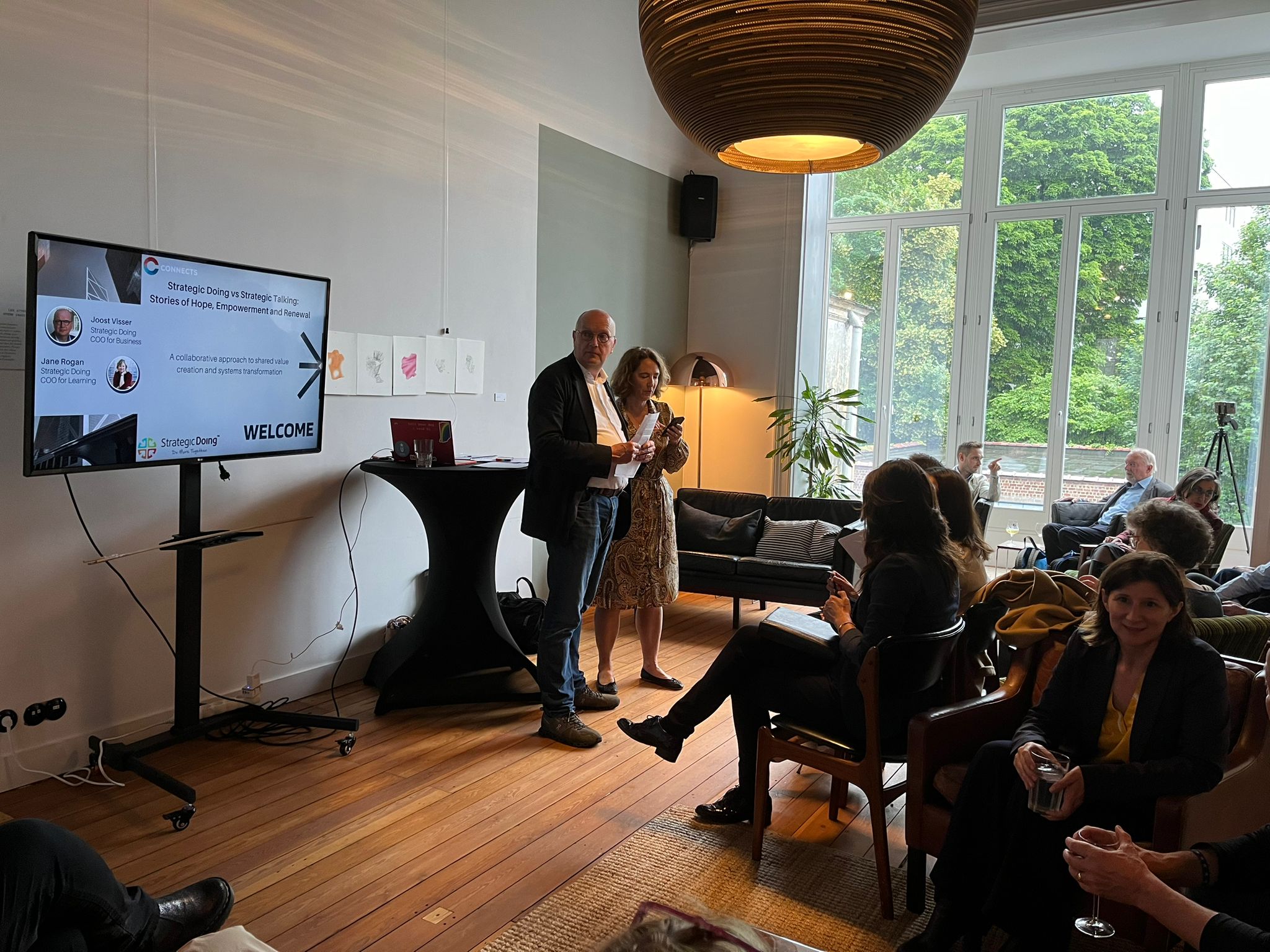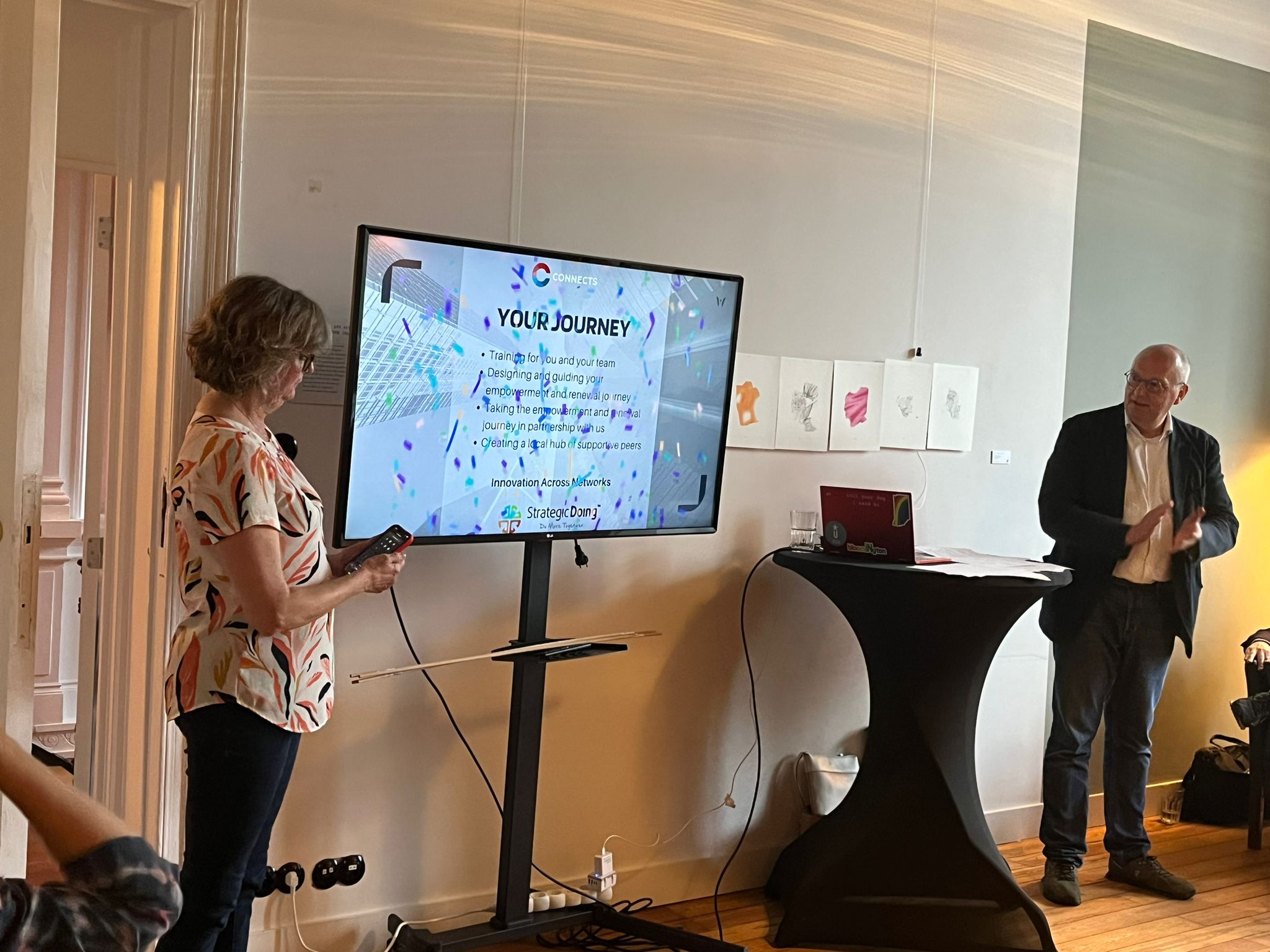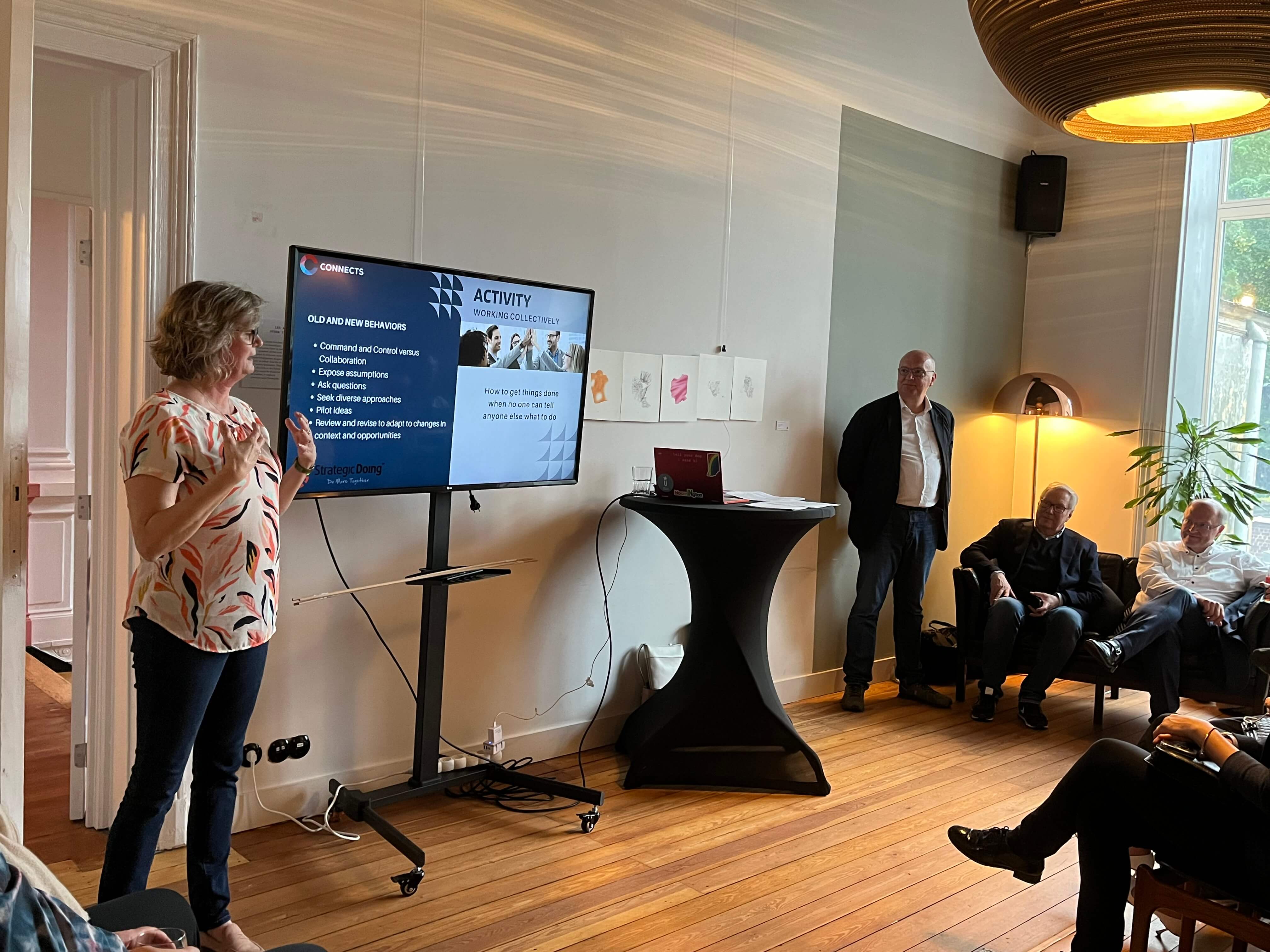By Polya Plamenova Pencheva, Communications and Engagement Trainee

As people kept entering through the doors of the Full Circle building, I couldn’t stop but wonder if I was at the right place. Of course I was, after all I have become part of the CONNECTS team. All my new colleagues were there but there were so many unfamiliar faces. They had all gathered to learn more about Strategic Doing (SD). As thoughts about what should I do and who I speak to kept nudging my introverted personality, faces I had already seen started to pop up to give me a warm welcome. It will be alright, I thought. It always is.
Exciting introductions were being exchanged in the room full of professionals from different backgrounds – chemical engineers, policymaker students, owners of companies, and more greeted each other happily. What a first/second day!
Digital onboarding is definitely way more difficult than I ever thought it would be. Being on-site, surrounded by the team made me realise that being present is what will help me figure out the tricks of the craft. Asking questions and getting answers was another key thing that I decided to do to get acquainted with my new role.
After all the goal of this exercise, coming to the event, was for me to understand what SD is. The last two days were an information overload as I was trying to find out more about what CONNECTS do, how they operate, and what my role is. After a lengthy conversation with Nira about the functions of the different team members and the role of TIAO and CONNECTS things are rather clearer than they were a week ago.
This event turned out to be a great opportunity to meet new people and see how Strategic Doing is taught.
The topic of the event was Strategic Doing vs Strategic Talking. 5 familiar words that are put in this order may sound rather confusing. So, let’s try to debunk what was the whole thing about. The talk was led by Jane Rogan and Joost Visser.
Jane Rogan is an SD fellow and co-COO responsible for learning and the global practitioners’ network. Moreover, she works collaboratively with community partners to develop capacity and create innovative growth opportunities in communities. Right, this is great but Jane as a person made the whole event feel less formal than it actually is. Her openness and passion for her work, allow her to give these talks with ease. Joost Visser is the Managing Director of CONNECTS (a partnering company of SD) and the co-COO of SD for business and brand development.


© Polya Pencheva
The event aimed to give clarity on what Strategic Doing is. How I see SD in a very simple way is as follows: gathering people with extremely different backgrounds to solve complex issues. What this means is thinking out of the box and focusing on connecting with people from different backgrounds who have different knowledge and expertise in comparison to ours. Additionally, she raised the topic of asking the right questions which happened through a particularly interesting game.
This was demonstrated in her ‘famous stick exercise’. What? You may wonder what these people do while they have events, but my explanation shall not be a lengthy one. Jane divided the audience into small groups of 8 or 10 people. Each group was structured of two rows of people facing the same direction. Everyone had to work together in order to lower down a wooden stick while holding just one finger out. This is odd and may not make sense at first. That was my first thought as well. However, this aimed at making people ask questions, and more specifically ask the right questions. Why is this not working? Who is wrong? Why is the stick going up? How can we synchronize?
The aim of this was to make different people work together to tackle a task. I guess this is a small-scale example of what the Strategic Doing Institute is doing. It did the work for me. Asking questions did help our group find a somewhat similar solution. Figuring out that we could do more than one thing at a time and coming up with new ideas made everyone smile and cheer positively.
This was one of the activities that were planned for the guests. There was one more that targeted different challenges in the bubbles of the different professionals. Now, at first, I got scared because I just started the job – two days ago. I am still clueless about what difficulties I may face in this position.
As a person with a journalistic background, I thought maybe hearing the opinions of people in science and finance on the topic of misinformation would give me some food for thought in terms of improving my writing in the future. So, after sharing everyone’s complex challenges we had to pick one and identify questions about ‘assumptions, hopes, and concerns.’ This I found particularly interesting because it gave me a glimpse of SD’s methodology and approach to handling complex issues.
The talk ended with drinks and some free time for everyone to socialize, exchange ideas, and share thoughts creating a better future for us.










